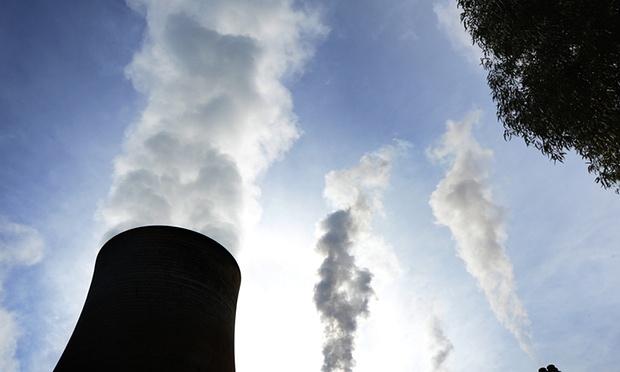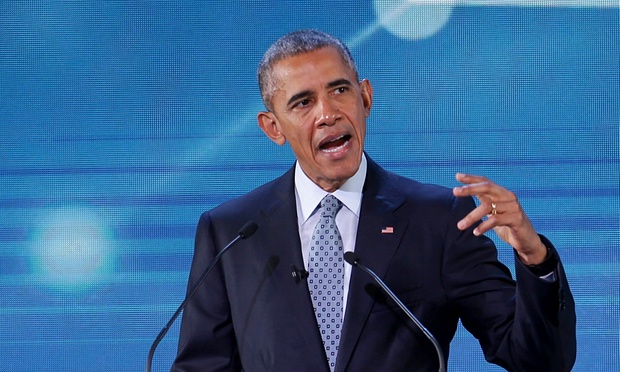This article originally appeared on The Guardian website.

Steam billows from the cooling towers at TruEnergy Holdings Pty’s Yallourn coal-fired power station in Yallourn, Victoria. Photograph: Bloomberg/Bloomberg via Getty Images
This week, world leaders are meeting in Paris to reach a new climate agreement to keep global temperature rise to no more than 2°C above pre-industrial levels. Yet the responsibility for tackling climate change, and sustainability issues more broadly, does not rest on the shoulders of politicians and diplomats alone.
Australian business also has an important role to play and there are two reasons they should care: risk and opportunity. Climate change is a massive risk to the business community. Every industry must consider its specific risk to income and expenses but most commonly these will include physical impacts, regulation, competition, insurance, changing markets, investment, energy infrastructure and litigation.
For Australian businesses, the risks around extreme weather are particularly high. More than half of the world’s natural disasters occurred in the Asia Pacific in 2014 and Australia is the most vulnerable advanced economy to the impacts of climate change. More than $226bn in commercial, industrial, road, rail and residential assets around Australia’s coast are potentially exposed to flooding and erosion hazards at a sea level rise of 1.1m – a high end but quite plausible scenario for 2100. There’s also a growing body of research which looks at the possible ways in which our financial systems themselves may be vulnerable to climate risk.
Consider the physical impacts alone: so far global temperatures have increased nearly 1°C. That may not sound like much, but in the past 50 years heatwaves have become hotter, last longer and occur more often. The increase in hot weather observed in the decade between 2000 and 2009 has already reached the best estimate projected for 2030.
In the summer of 2013/14 – known as the “angry summer” – 156 records were broken in 90 days. Similarly 2015 is likely to surpass 2014 as the hottest year on record, while October was the hottest October on record for Australia. Recent research by David Karoly and colleagues from the University of Melbourne shows that human-driven climate change made this new record at least six times more likely than it would otherwise have been. October’s temperature was also the most above-normal month globally in history and was the eighth month this year to set a new heat record.
These impacts have many consequences for business. Lost productivity and absenteeism due to extreme heat is costing the Australian economy almost $8bn a year. Recently a study from the University of Cambridge described how, as awareness of climate-related risks grows, climate–smart businesses are beginning to question how global environmental trends – such as increasing pressure on agricultural land, food security, soil degradation, local water stress and extreme weather events – will affect financial markets.
This builds on the work of leading economists such as Nicholas Stern in the UK and Ross Garnaut here in Australia, who argue the benefits of early action lead to significantly higher economic growth rates and returns over the long run, especially when compared to a worst-case scenario of climate inaction. Simply put, inaction is a risky business.

US President Barack Obama at the Apec summit in Manila, Philippines on 18 November 2015, where he said bold climate action will mean a business boom in Asia and around the world. Photograph: Aaron Favila/EPA
Of course business is also about creating opportunities and there will be plenty as humanity weans itself off fossil fuels and creates a clean, healthy and vibrant economy. Back in 2007, the Climate Institute described how the move to a carbon-constrained global economy could deliver strategic opportunities, such as building new markets, corporate positioning, gaining regulatory intelligence and competitive advantage. “Business as usual” is no longer an option and that change is inevitable.
A recent New Climate Economy report contends it is possible to have more equitable, more sustainable and more resilient economies. An exciting area is the rapid innovation and declining costs of clean energy technologies. The price of solar photovoltaic (PV) modules, for example, has dropped 75% and onshore wind power has fallen 30% over the last five years. More than 7.7 million people are now employed globally in the renewable energy sector. Last year for the first time, global emissions shrank while the economy grew. This was driven primarily by clean energy solutions.
The United States has witnessed a swathe of corporate giants sign up to the White House’s American Business Act on Climate Pledge. The pledge recognised that delaying action on climate change will be costly in economic and human terms, while accelerating the transition to a low-carbon economy will produce multiple benefits with regard to sustainable economic growth, public health, resilience to natural disasters and the health of the global environment. General Mills, a global food company and recent signatory, said addressing climate change was imperative to its long-term viability as climate change places significant pressure on vulnerable growing regions that produce many important crops.
In Australia, the most significant business announcement to date arrived from Commonwealth Bank and NAB. Both banks have made overarching commitments to the 2°C goal. Although they are still working out the finer detail, these commitments are significant because they inherently require the banks to transition funding away from fossil fuels that drive climate change.
So what can all Australian businesses do?
First, they must make their voices heard on climate change. Business is a powerful advocate for policy change and has been largely silent in the climate debate in Australia until recently.
Second, business should be powered with renewable energy. Ten percent of all emissions are created by commercial buildings and addressing this is a prudent business decision as well as beneficial to the environment.
Finally there is huge scope to invest in energy efficiency in Australia, which will also impact the bottom line. These investments will provide a competitive edge as information on energy and greenhouse gas management practices are increasingly requested by customers and are required in tender documents.
In a recent blog, KPMG’s Adrian King discussed what a climate deal in Paris might mean for businesses, stressing that high-carbon activities would be costlier and businesses would face tighter regulation, carbon pricing and more stringent targets for emissions cutting. On the up side, this means the case for becoming a low-carbon business will be stronger (and more profitable) than ever before.
When it comes to such opportunities, the adage “first in, best dressed” holds true. While there is still time to act, the window of opportunity is finite and shrinking. Those who are nimble and forward-looking enough to act first will be in the best position to benefit from what US President Barack Obama referred to at the Asia-Pacific Forum on Economic Cooperation to as a “business boom”.